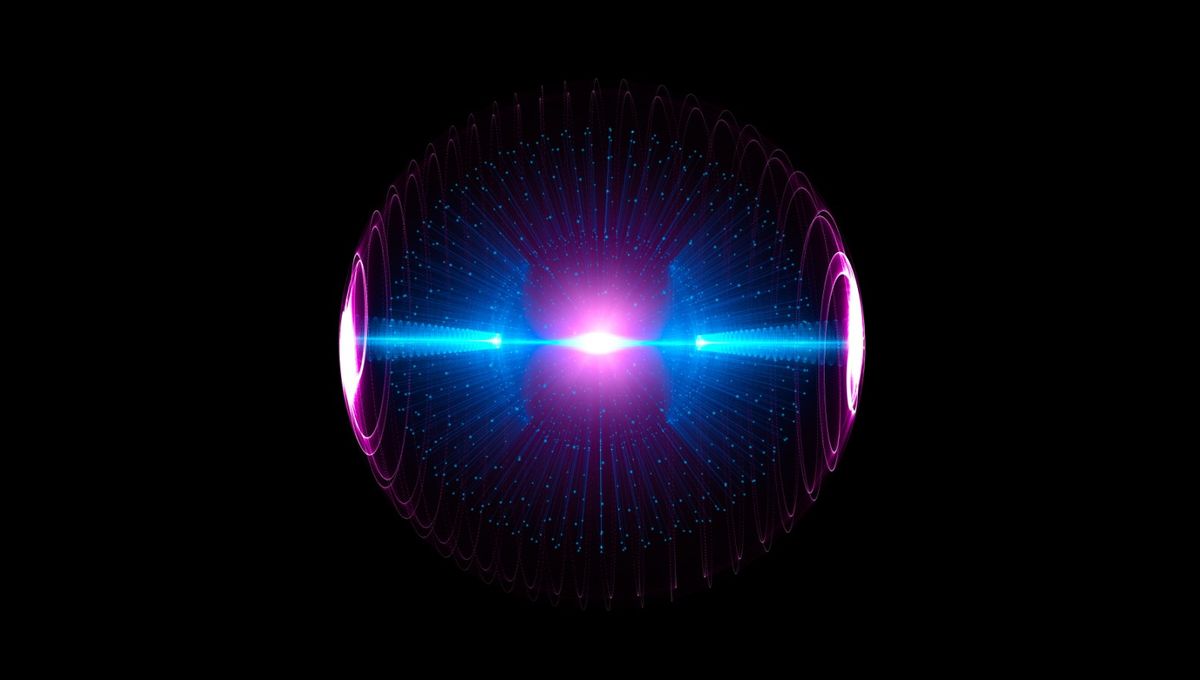
The standard model of particle physics is both an incredible scientific achievement and a frustrating barrier that physicists are battling against. It has been crucial to understanding and predicting so much but at the same time, we know it is not complete. But finding what’s beyond has proven difficult. The latest measurement adds to this frustration.
Researchers have provided the most precise measurement ever of the magnetic moment of the electron. The measurement is 2.2 times more precise than the previous record, which was achieved by the same team. The magnetic moment is the tendency of a particle to align with a magnetic field and when it comes to the fundamental particles, this is something that the standard model predicts pretty accurately.
This feat was made possible by keeping a single electron in a system called a Penning Trap, where it experienced a magnetic field of 5 Tesla, that’s roughly 100,000 times stronger than the Earth’s magnetic field. The system was cooled down close to absolute zero so that the motion of the electron was quantized.
Important to this measurement is the spin g-factor. Originally, this value was believed to be equal to 2 based on the Dirac equations of quantum mechanics. Lovely round number. But further analysis suggested that it was actually slightly higher due to the universe being a lot more complicated (all to do with virtual photons in quantum electrodynamics), so the value g-2 came into use as the anomalous magnetic dipole moment.
The anomalous magnetic dipole moment is an amazing testbed for the standard model. And it is interesting for all the charged leptons: electrons, muons, and tau particles. Muons and tau are just like electrons but much heavier. The main difference, apart from their mass, is that while the electron is stable, the muon decays in 2.2 microseconds, and the tau’s decay is 10 million times shorter than that.
When it comes to the g-2 measurement for the muon, the best available data suggest that it deviates from the Standard Model. Analysis is underway to confirm if the deviation is an indication of physics beyond the standard model or not. The muon is a lot more massive than the electron, 207 times to be precise. So if there is a force or a particle not predicted in the standard model interacting with the charged leptons, the effect is much more pronounced in muons.
But this new measurement brings a new level of precision to the electron g-2 value. They obtained a relative accuracy of 0.13 parts per trillion. That is about 3,000 times smaller than the same value for the muon but still not quite enough to see a discrepancy. And yet, a different measurement might help bridge the difference and make this value 10 times better. A better number for the fine structure constant.
This number, known simply as α, is roughly 1/137 and it is found in so many physics laws that you encounter it when trying to understand why the Sun shines and why bread mostly falls on the buttered side. But the two most accurate approaches that aim to precisely define this constant are getting slightly different numbers. The difference is tiny but would make the measurement of the anomalous magnetic dipole moment of the electron precise enough to see if there is a difference with the value predicted in theory. Work is underway to sort out this discrepancy between those two groups and the excitement is palpable.
“All these developments indicate that the electron has never been so well poised to open a window on new physics,” Professor Saïda Guellati-Khelifa, one of the team trying to determine the fine structure constant to higher precision, wrote in a Viewpoint on the new research.
The paper about the measurement of the electron’s magnetic moment was published in Physical Review Letters.
[H/T: APS]
Source Link: Measurement Of Electron’s Magnetic Moment Could Be Strictest Test Yet For The Standard Model